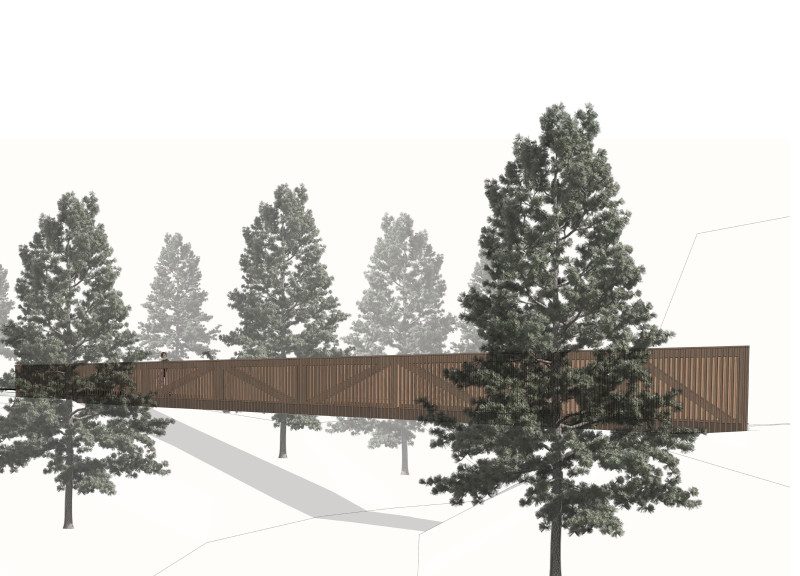5 key facts about this project
The Woodland Bridge and Visitor's Centre in Gauja National Park, Latvia, exemplifies a contemporary approach to integrating architectural design with natural landscapes. The project comprises a bridge and an accompanying visitor's facility, serving as a gateway to the park while enhancing the user experience within the natural environment. It reflects a cohesive effort to merge functionality with ecological sensitivity, promoting visitor engagement with the unique features of this area.
The architectural design employs locally sourced materials, including birch, steel, plywood, and timber cladding, creating a tactile relationship with the surrounding environment. These materials were specifically chosen to minimize the ecological footprint and ensure durability, while also allowing the structure to harmonize with the wooded landscape. The bridge takes on a linear form, allowing for an elevated perspective of the park’s natural beauty, thereby enhancing the visitor experience.
Unique Aspects of the Design Approach
What sets this project apart from others is its focus on a seamless interaction between visitors and the environment. The bridge acts not only as a means of crossing but as an experience in itself. By elevating visitors above the forest floor, the design invites exploration and interaction with both built and natural elements. The architectural plans detail how the bridge’s orientation frames significant views of notable landmarks such as the church and pond, facilitating a deep connection with the surrounding nature.
The integration of open and closed spaces within the bridge design allows natural light to penetrate, creating a dynamic atmosphere throughout the day. This careful consideration transforms the space, promoting not just transit but engagement, contemplation, and enjoyment of the environment, which is paramount in nature-focused architecture.
Functionality and User Engagement
The Woodland Bridge and Visitor’s Centre is designed to accommodate diverse visitor activities, promoting educational engagement and appreciation for the park’s ecological diversity. The layout of the facility encourages movement and interaction, with strategic placement of viewing platforms enhancing the visual connection to the landscape. The use of architectural sections and plans illustrates the fluidity of movement between different spaces, where visitors can shift from open platforms to enclosed areas that provide shelter without detaching from the experience of the natural environment.
This project showcases a thoughtful application of modern architectural techniques alongside traditional materials, emphasizing sustainability and user engagement. By effectively merging form and function, the Woodland Bridge and Visitor's Centre presents a forward-thinking model for similar architectural endeavors.
For more detailed insights into the design and its nuances, readers are encouraged to explore the architectural plans, sections, and overall architectural ideas behind this project to fully appreciate its technical execution and design principles.


























